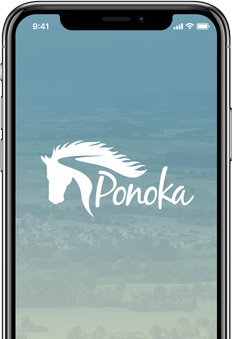 Water is a precious resource and every drop counts.
Water is a precious resource and every drop counts.
While the Town of Ponoka is not facing any water restrictions right now, being mindful of our water use is important. Below-average water levels across the province remind us not to take our drinking water for granted.
That is why local citizens are encouraged to continue to voluntarily reduce their water use. Thanks to our community's great habits, many of you are already making every drop count.
To learn more about current conditions and what you can do to conserve water, please click on the links below:
Current Conditions
To view the current conditions in the Town of Ponoka, please visit the Government of Alberta website by clicking here.
Please note that the Town of Ponoka monitors the conditions in collaboration with provincial authorities and our regional partners.
Where does the Town of Ponoka's water come from?
The Town of Ponoka's drinking water comes from the Red Deer River. It is first treated at the Red Deer Water Treatment Plant and arrives in Ponoka through the regional water line. The regional water line is operated by North Red Deer River Water Services Commission. The regional water line also connects with Blackfalds and Lacombe.
What Can I Do to Save Water?
Kitchen |
|
Bathroom |
|
Laundry |
|
Landscaping |
|
Watering |
|
Lawn Mowing |
|
Cars and Boats |
|
Pools and Hot tubs |
|
Pressure Washing |
|
What is the Town of Ponoka is Doing to Reduce and Reuse Water?
The Town is practising good water stewardship by reducing and reusing water in the following ways:
- Low-Flow Nozzles at the Spray Park
- The Spray Park uses low-flow nozzles to reduce water consumption.
- The Spray Park uses low-flow nozzles to reduce water consumption.
- Re-using Water for Plants and Flowers
- Holding tanks below the Spray Park capture most of the water used at the facility, which is then dechlorinated and reused to water trees, plants and flowers around town. Any residual water drains into local waterways.
- Holding tanks below the Spray Park capture most of the water used at the facility, which is then dechlorinated and reused to water trees, plants and flowers around town. Any residual water drains into local waterways.
- Recirculating Water at the Ponoka Aquaplex
- The Aquaplex water circulation system filters and recirculates the water, which significantly reduces water used and operating costs at the facility.
- The Aquaplex water circulation system filters and recirculates the water, which significantly reduces water used and operating costs at the facility.
- High Efficiency Ice Making
- A new high-efficiency ice plant was installed at the Ponoka Arena Complex in 2021, which greatly reduces the amount of water used throughout the ice season.
- A new high-efficiency ice plant was installed at the Ponoka Arena Complex in 2021, which greatly reduces the amount of water used throughout the ice season.
- Moisture Sensor for Irrigation
- The in-ground irrigation system at the Lucas Heights soccer fields in Ponoka uses moisture sensors to ensure that watering only happens when the fields need it. For example, during rainy weather, the irrigation system is not activated.
Provincial Drought Information in Alberta
For up-to-date provincial drought information, please visit the Government of Alberta's website by clicking here.


